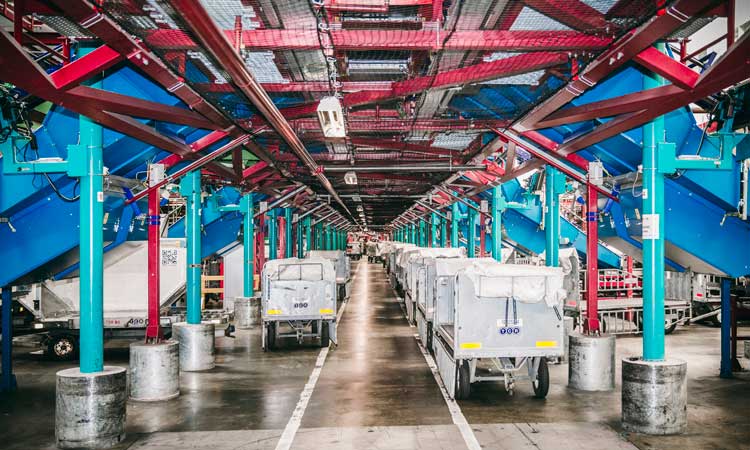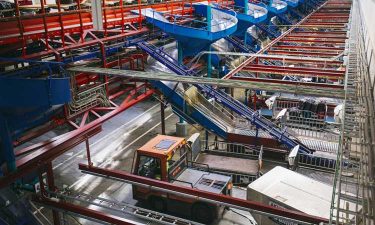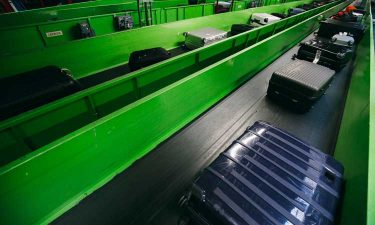Combining algorithms and change management at Copenhagen Airport
- Like
- Digg
- Del
- Tumblr
- VKontakte
- Buffer
- Love This
- Odnoklassniki
- Meneame
- Blogger
- Amazon
- Yahoo Mail
- Gmail
- AOL
- Newsvine
- HackerNews
- Evernote
- MySpace
- Mail.ru
- Viadeo
- Line
- Comments
- Yummly
- SMS
- Viber
- Telegram
- Subscribe
- Skype
- Facebook Messenger
- Kakao
- LiveJournal
- Yammer
- Edgar
- Fintel
- Mix
- Instapaper
- Copy Link
Posted: 28 July 2020 | Louise Gro Trads-Ravig, Samuel í Hjøllum Rude | No comments yet
Samuel í Hjøllum Rude and Louise Gro Trads-Ravig from Copenhagen Airport demonstrate the benefits of using algorithms and change management together to gain the desired value of optimisation within baggage handling.


Optimisation is, arguably, an everyday task in most airports around the globe. The optimisation game is all about getting the passengers and their bags through the process from kerbside to airside. During the process, it is essential to maximise the customer experience, securing a high-quality service and utilising the infrastructure in the best possible way.
Optimisation to create value
During recent years, the baggage area in Copenhagen Airport (CPH) has introduced many optimisation initiatives, building on decision science. When predictions meet mathematical algorithms, the solution is creating value for different stakeholders – for example, passengers and ground handlers – and helping to utilise the airport infrastructure. An example of this is an algorithm balancing the windows on the takeaway belt. This solution is, to our knowledge, unique, and creating equal takeaway capacity in the check-in counters, whether they are up or down stream at the takeaway belt. Another example is an algorithm that is continuously balancing the allocation of reclaim belts – it is improving the passenger experience by minimising their walking distance and reducing the allocated overlap of flights on the same reclaim belt.
These optimisation initiatives have been of great value, as they turn the solutions away from being based on gut-feelings to a rational and data‑driven approach. In other words, the algorithms are moving operations from being based on tacit knowledge to explicit knowledge. The projects are often taking off as a result of close collaboration between CPH and the leading technical university in Denmark, Danmarks Tekniske Universitet (DTU). For instance, several bachelor and master theses have been produced with the baggage infrastructure in Copenhagen Airport as the point of departure. The benefits are significant when learning and knowledge from other industries and academia are brought into play in the airport baggage industry – an industry which, in our view, is usually somewhat conservative. Another reason for success is how the optimisations are planned and executed in collaboration with the people involved in the process. The ‘human side’ is, in our experience, often a low priority in projects with a technical scope. It is, however, of paramount importance to the realisation of benefits and the adaptation of solutions in the long term.
Implementing change management at Copenhagen Airport


Speaking of change management in a technical environment, it often ends up focusing on training and education after the product has been delivered. From our point of view, this can be compared to the butterfly effect, which focuses on the unpredictable consequences our actions result in. In this case, we wait to see which impact the product has on the user group until the delivery, which leaves us no option for corrective actions in the design phase. Instead, we are controlling the interplay between the technical and human side of projects in advance, which is done by focusing on change management from the beginning of the project. This is implemented as a structured involvement of all stakeholders and handling possible resistance and concerns along the way.
Chute allocation in Copenhagen Airport has been referred to as our Achilles heel. It has been an ongoing discussion between baggage ground handlers and CPH – how to divide the sortation areas and corresponding chutes between the actors. Previous discussions were focusing on fairness in the number of chutes allocated and whether overall capacity was sufficient. The problem here was a lack of insight and knowledge, as demand and supply were driven by history and instinct. To compensate for the lack of fairness in the area distribution, we evaluated the area breakdown in relation to the summer and winter traffic schedule. Whenever an airline switched handler, it was leading to negotiations between the airport and the ground handlers on the area breakdown for the coming period. In this way, the knowledge was tacit, and we didn’t have clear rules determining the demand. Furthermore, we could see that the peaks in volumes were at a different time of the day among the ground handlers. So, we were pretty sure that we didn’t utilise the capacity to its full potential. With that in mind, we created the vision of the project: “To create a fair and transparent solution that consistently matches the demand of chutes”.
The benefit of collaboration
The previous section describes the process, where Copenhagen Airport is implementing the tactical plan – for example, the area breakdown that shows how many chutes are allocated to a handler, as well as where and when. The specific handler then makes the operational plan, which is the daily allocation of flights. In this way, there are significant interdependencies across the actors in the process. Gaining the overall optimal value of the process, the ground handlers must experience the solution being fair, transparent, meaningful and matching the demand. This is a strong argument for a dedicated focus on a structured change management process.


Together with our supplier, Qampo, we used an agile process, and planned the project in close collaboration with representatives from each ground handler, as they are the primary user of the chutes and baggage facilities. In partnership with the ground handlers, we agreed on a ruleset that determined the demand of chutes for each flight, based on the expected baggage volumes. The limits were set by testing volumes using a machine learning model and a developed algorithm to give us a sense of the effect of changing the rules. With the demand and capacity evaluation in place, we could get human feedback on the proposed solution. This made it possible to evaluate the solution, add new rules and remove old ones, and show people the consequences of their preferences.
The positive effect of this is that everybody understands the overall picture of our capacity utilisation and, by discussing the rules, we develop an understanding and recognition of each other’s situation. As a result of the structured change management approach, we have succeeded in implementing an advanced mathematical algorithm. The algorithm is rule-based and making solutions that are perceived as both transparent and fair by all involved parties. Furthermore, the infrastructure is used in an optimised manner throughout the day. Our partners, the ground handlers, also have some ownership of the process and a good understanding of why we need to change the chute areas. This is eliminating discussions and improving the cooperation between all the actors involved in the process.
For now, we have been working on the algorithm for area breakdown. The next step is to improve value further by improving capacity utilisation and quality in a project involving the ground handlers in the development of an algorithm for daily chute allocation. The ground handlers will still be in control of the end of the process.
Essential learnings for Copenhagen Airport from this project
Many problems in baggage processes are mathematical problems and, thereby, best solved using maths, rather than instincts. There is significant value in teaming up with academia, as it contributes to different perspectives, pushing the boundaries and resulting in ‘out-of-the-box’ solutions. Most importantly, the ground handlers are essential partners at all levels, and to be good at the technical side of the project is not enough. The desired value is created across all actors in the baggage process. The implemented solutions should be invented in collaboration with the stakeholders – in this case, combining change management and algorithms.
Biography




Issue
Related topics
Baggage handling, Machinery, Passenger experience and seamless travel, Terminal operations


















